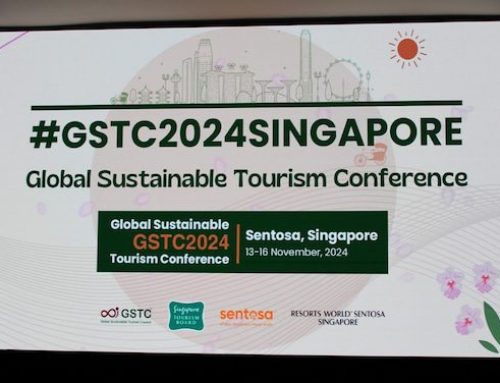Destination Stewardship Report – Summer 2020 (Volume 1, Issue 1)
This post is from the Destination Stewardship Report (Summer 2020, Volume 1, Issue 1), an e-quarterly publication that provides practical information and insights useful to anyone whose work or interests involve improving destination stewardship in a post-pandemic world.
GSTC-D A1: Its Importance
by Randy Durband, CEO, GSTC
The GSTC Destination Criteria have well proven their value as guides to good destination stewardship. GSTC has chosen not to provide weighting to specific criteria, preferring to present a holistic system. Yet, it is natural to call out key elements.
For example, Criterion A8 on visitor management is essential, and destination management organizations should build strong internal capacity on the principles expressed there and knowledge of successful cases of its application. Criterion A5 is also essential, as community engagement is needed to minimize any harmful impacts of tourism to various community residents, including those who generally lack political voice.
But standing at the top of my list – as with many of us in the global community of experts in sustainable destination management – is Criterion A1, which summarizes the importance and composition of a highly inclusive planning group. Inclusive in terms of a “whole-government” approach and in terms of ongoing and meaningful engagement with stakeholders from the community and from tourism-related businesses.
GSTC Destination Criterion A1 and indicators
| Criteria | Indicators | |
| SECTION A: Sustainable management | ||
| A(a) Management structure and framework | ||
A1 Destination management responsibility The destination has an effective organization, department, group, or committee responsible for a coordinated approach to sustainable tourism, with involvement by the private sector, public sector and civil society. This group has defined responsibilities, oversight, and implementation capability for the management of socio- economic, cultural and environmental issues. The group is adequately funded, works with a range of bodies in delivering destination management, has access to sufficient staffing (including personnel with experience in sustainability) and follows principles of sustainability and transparency in its operations and transactions. | a. Documentary evidence showing relevant make-up and responsibilities of the group. b. A financial plan and budget showing current and future funding sources. c. Evidence of links and engagement with other bodies. d. Records of permanent staff and contracted personnel, indicating relevant experience. e. Management guidelines and processes, which demonstrate awareness and adherence to sustainability principles and transparency in operations and letting of contracts. | |
Creation of some form of council should not be seen as a diminution of the authority of any public agency. Rather, its application should be viewed as wise and effective leadership from the public authority. To make it work, it needs to function with a degree of regularity, and it must continue in perpetuity, surviving changes of government leadership. Because it is essential. Conforming to all the Criteria can be better accomplished with this type of management commitment and structure. — R.D.
GSTC-D A1: The Context
by Jonathan Tourtellot, CEO, DSC
Most tourism is about the place. The tourism industry relies on the character, appeal, and resources of the destination as a whole. Sometimes it may be one particular asset – wildlife, a beach, a historic district. More often it’s the interwoven combination of distinctive characteristics that constitutes sense of place. That’s why we travel.
Yet when governments and many other policymakers consider tourism, they tend to consider the industry in isolation, compartmentalized, seeing it simply as the aggregate of businesses where tourists spend money. Growth in transactions is a main metric of success, along with employment and tourist arrivals. But where does the money end up, who gets hired, and which tourists are arriving? Most important, who’s in charge?
Too often, the answer is “no one.” Different interests can work at cross purposes – preservation versus development, agriculture versus conservation, tourists versus locals.
Without holistic management that includes citizen participation, difficulties can easily arise, and have: overtourism, neighborhood disruption, cultural degradation, and various environmental problems. By contrast, well-managed tourism can enrich communities, improve public education, and provide the means to sustain natural habitats and elements of cultural heritage, from music and theater to architecture and cuisine.
The relationship between tourism and a destination is complex. It requires a collaborative approach. Criterion A1 takes care not to prescribe the structure – …an effective organization, department, group, or committee… – just that it be done in whatever way best suits destination stakeholders and citizens. Today’s coronavirus threat will eventually recede and tourism return. Climate change looms in the background. Now is the chance to plan tourism recovery right. —J.B.T.




